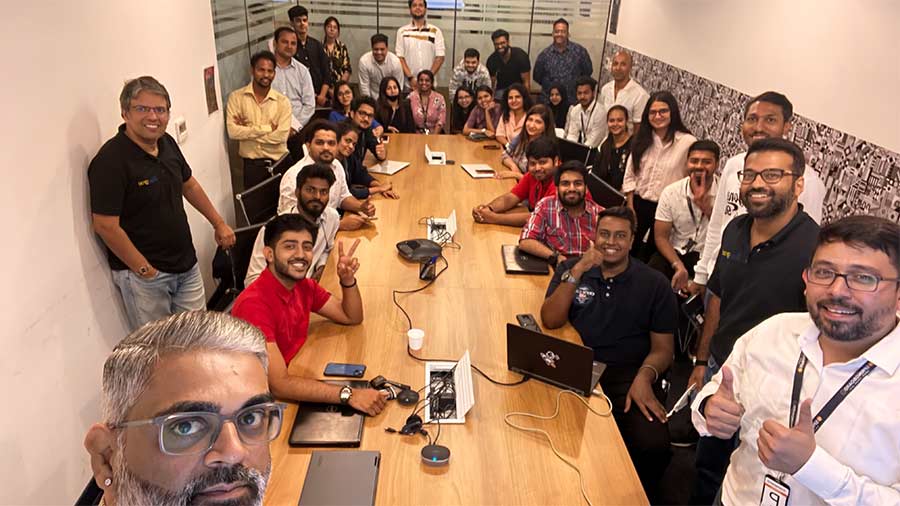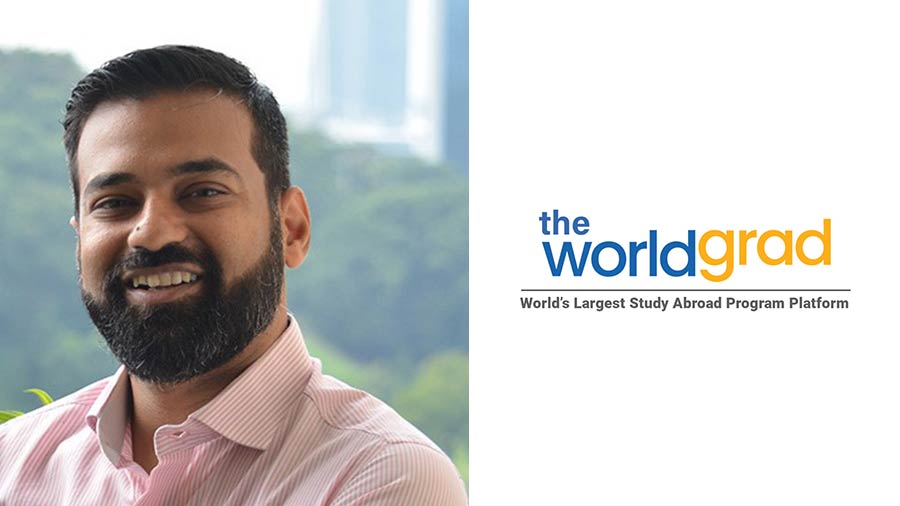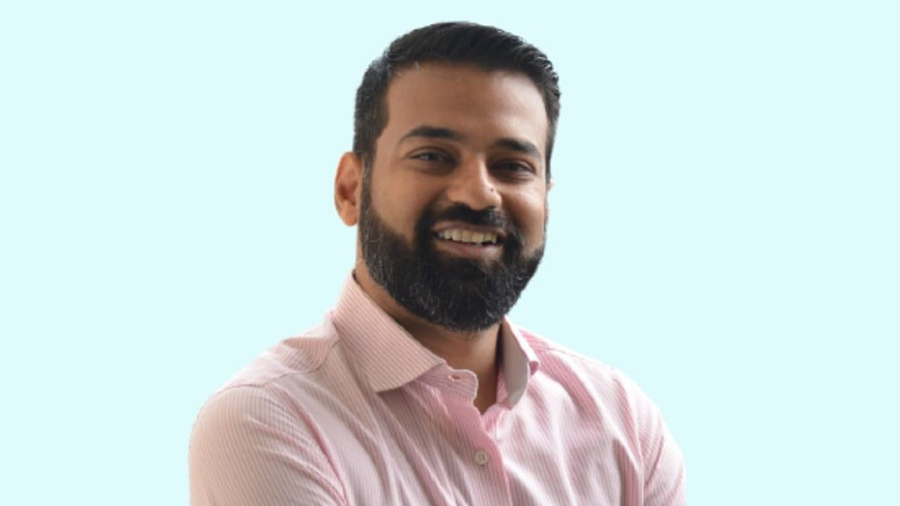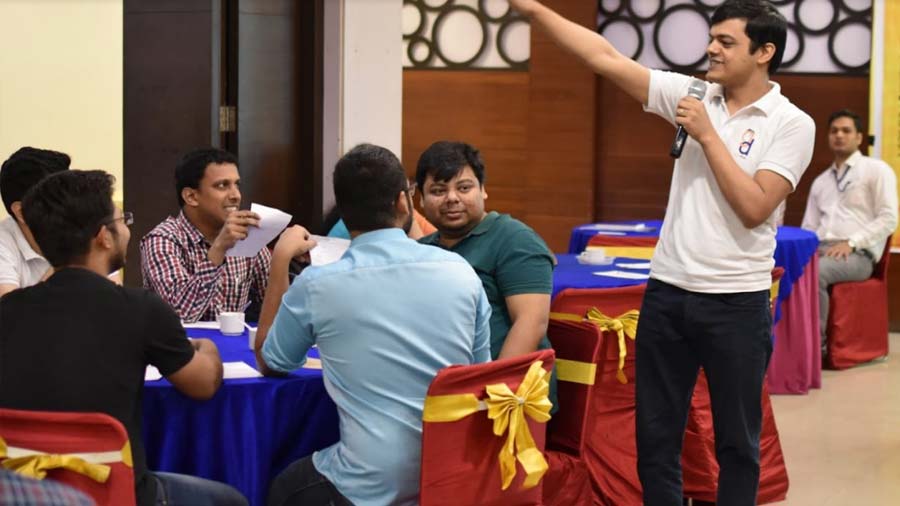According to Statista, Indian students spent almost $30 billion for overseas higher education in 2019, a figure which is expected to rise to $80 billion by 2024. As obtaining a degree from abroad keeps getting more and more popular, arranging for the finances, not to mention the other logistical requirements, is getting increasingly challenging. And even if one has been able to get everything in place and set sail for the UK, the US, Canada or Australia, it is by no means the end of the struggle.
“Every company involved in overseas learning is occupied with getting students admitted into their dream universities. But what happens after that?” asks Abhinav Mital, co-founder of The WorldGrad (along with Pranav Saxena), headquartered in Mumbai, which aims to optimise the learning needs of students once they have landed a seat at the overseas institution of their choice.
Partnering with 27 international universities at present, The WorldGrad allows Indian students the unique opportunity to start a part of their preferred course online from the comfort of their homes, before moving abroad to complete their degrees. The advantage: overseas education instantly becomes easier, cheaper and more rewarding.
My Kolkata caught up with Abhinav; edited excerpts follow.
One out of three Indian students fails the first term of their overseas education

The WorldGrad provides hybrid programmes that allow students to understand the challenges of academic learning abroad from the comfort of their homes Courtesy The WorldGrad
My Kolkata: How did the idea of The WorldGrad come about? What makes The WorldGrad different in a market that is saturated with counsellors, advisors and intermediaries when it comes to studying abroad?
Abhinav Mital: Let me answer the second part first. We’re essentially an overseas programme provider. We provide study programmes to students which they can use to get a degree. A student can enrol with The WorldGrad, start their education programme from the comfort of their homes, complete a semester or a year’s worth of education at home, before transitioning to on-campus education overseas at any of our partner universities. It’s a hybrid model that helps students in a number of ways. First, in terms of getting a sense of the overseas academic environment and getting used to academic expectations. One out of three Indian students fails the first term of their overseas education, because adapting to the academic environment while living by themselves and taking care of food and accommodation, not to mention a foreign culture, becomes extremely challenging. Students can familiarise themselves with the academic requirements before they shift. Second, it saves a lot of money as we bring overseas professors into students’ living rooms via computers or mobile phones at one third the cost. This is also supplemented by the savings a student makes in terms of living and food costs while effectively studying from home. Third, it gives students credibility when they apply for their student visas, as they can already show an academic profile and transcripts of marks to the visa authorities. So far, we have a 100% visa acceptance rate for our students, which is possible largely because there is no doubt over their academic authenticity.
As for where this idea came from, The WorldGrad is a part of a Singapore-based company called LINC Education. We have a network of over 500 teachers across the world and have been collaborating with various universities for the last five years enabling their online degree programmes in their domestic markets. During our interactions with universities, they told us that they get a lot of international students, but there are high rates of failure and discontinuation because most students struggle academically in a new system. That’s where we realised that there was an opportunity for something like The WorldGrad to come in, where students are supported by overseas and local teachers so that the chances of their academic success go up. We started taking our concept to universities in December 2019. A few months later, due to Covid-19, universities started reassessing their risks in terms of bringing international students on campus and we signed our first partnership in April 2020, before embarking on our programme development phase. Our first set of programmes were launched at the beginning of 2021.
Wollongong in Australia, Brunel in London among most popular universities

(Left) The University of Wollongong near Sydney and (right) Brunel University in London are among the most popular destinations for The WorldGrad’s students Courtesy The University of Wollongong and Brunel University London
Which courses and universities among your partners abroad are among the most popular for Indian students?
In Australia, our leading partner is the University of Wollongong (UoW), ranked among the top 10 in the country and 183 globally. It also has the highest ratings in relation to job placements in Australia. UoW has something called the Global Online Accelerator programme, where students can start in the business or information technology (IT) streams and once they get their basics in place, there’s a whole range of courses and specialisations to choose from. Both these streams are very popular. University of Adelaide is another popular destination in Australia. Over in the UK, the most popular right now is Brunel University, London. It’s a tier-1 institution in the UK, well-known for business degrees (Usain Bolt, incidentally, has an honorary doctorate from Brunel!). We’ve also recently added partnerships with the universities of Portsmouth, Plymouth, Sunderland, among others, in the UK. Among our US partners, the demand is mostly for STEM courses. Some of our US partners are University of Dayton, Cleveland State University, the New York Institute of Technology and Mount Saint Mary’s University in Los Angeles, which has a fantastic film and media school.
The interest in business or STEM courses is not the same in East India as it is in the North

Most of The WorldGrad’s applicants come from tier-2 cities TT Archives
Could you give us an idea of where in India most of The WorldGrad’s applicants come from? Is there any specific information you can share about applicants from Kolkata and West Bengal?
For courses in the UK and Canada, students mostly come to us from North India. Whereas for courses in the US, the concentration is largely from Maharashtra and states in the South. While a lot of our applicants are from tier-1 cities, the majority are from tier-2 cities like Kochi, Panjim, Ludhiana, Jalandhar and Rishikesh. We get applicants from tier-3 cities, too, but we’ve realised that many of them face logistical challenges when it comes to accessing online classes. This is why we’ve started opening study hubs where we provide students with laptops and a strong internet connection to help them access classes smoothly. So far, study hubs have been opened in Punjab and Gujarat.
As for interest from Kolkata and West Bengal, there’s a great deal of interest, but not much of it gets converted into enrolment. We feel it’s because of two reasons. First, the demand among students in Kolkata and Bengal to go abroad is mostly for postgraduate courses, while our emphasis is still very much on undergrad. Second, the interest in business or STEM courses is not the same in East India as it is in the North. Having said that, we’ve been debating whether or not to open a Kolkata branch of The WorldGrad in the near future.
Australia pays far more attention to the needs of international students than the US

The WorldGrad helps out students with scholarships, loans and other kinds of financial aid TT Archives
The WorldGrad claims to reduce overseas education expenses by 30 per cent. Can you elaborate how?
A lot of the cost-cutting happens when students take a part of their course online, as mentioned earlier. Besides, we pre-negotiate scholarships with universities, especially those in the US, because they have a very complicated system of financial aid, which can be difficult for students to figure out. As a digression, I feel it’s important to state that even though the US is the most sought-after destination for Indians, their overall intake of international students is just four per cent of their total student strength. Compare that to Australia, where the same number is 35 per cent. This is because the US has almost 4,000 universities. All this means that the US is less likely to cater to the needs of international students in terms of providing all the information they need about scholarships and grants, while Australian universities are far more clear and cooperative in that respect. We also help students reduce their expenses through exclusive scholarships, based purely on the goodwill of our partnerships with universities, which can be worth as much as Rs 100,000 or 150,000.
We’ve seen reluctance among families when it comes to taking education loans
In terms of education loan consultancy, which is one of your main verticals, what is the demand for loans and financial aid? Do you tie up with banks or NBFCs to facilitate these loans?
We provide extensive financial consultancy to our students and their families. But, in general, we’ve seen reluctance among families when it comes to taking education loans. They’d rather pay the money out of their pockets. Out of the 600 students who will be going abroad through our programmes in the next 12 months, only 30% are availing loans of some kind. But I’d like to stress that education loans are a feasible and reasonable way to study abroad, since it takes a lot of pressure away from the families of the students.
In terms of our tie-ups, we have partnerships with many leading lenders across the country, including HDFC Credila. We also partner with organisations like GyanDhan, who specialise in different brackets and complexities of student loans.
Some 50 to 60 per cent of Indian student visas for Canada are getting rejected

Canada's popularity as a destination for overseas learning has plunged over the last year due to rapid rejection of student visas TT Archives
Have student visa rejections gone up in the last few years? What are the biggest challenges students face to obtain visas these days and how do you help them deal with them?
Visa rejections have gone through the roof since the pandemic, especially in Canada, where some 50 to 60 per cent of student visas from India are getting rejected at present. This has also led the UK and Australia to become more popular destinations for Indian students over the last year (US remains number one). Any student visa approval is based on a combination of student profile and the credibility of the programme and the university where the student is enrolled. Due to the pandemic and the job crisis back home, a lot of Indians have been looking at Canada as an option to immigrate. In doing so, they often choose programmes or diplomas from institutions that aren’t well-known or ones that don’t do their due diligence. This also applies to other countries. For instance, if a student has an offer letter for a vocational course from a private university in Australia that very few people have heard of, their chances of facing a visa rejection are far higher as compared to someone who has an offer letter from a top-10 Australian university. How we help is that with the help of our programmes, students have already established their academic authenticity and credibility. So, they face no risks when it comes to visa rejections.
How exactly does your personalised student-support programme work?
Once a student applies and tells us what they would like to study, we choose the best options for their requirements from among our 100 partner universities, including courses and hybrid programmes. Then, we proceed towards admission and arrange an offer letter for the students. For those opting for our hybrid programmes, upon admission, students are provided with one overseas educator and one Indian educator for the duration of the course they want to complete from home. The overseas educator provides equivalent learning and support to what the student would’ve received on campus, while the Indian educator offers personalised tuition based on where the students are lagging behind. Our overseas and Indian educators are equally qualified and part of the LINC group of teachers, so there’s no compromise in terms of the quality of teaching. In addition to these educators, each student is also assigned a student success advisor, who can help them with logistical and other co-curricular needs.
The main objective is to ensure that the students are adequately prepared to deal with their academics before they make the transition from their homes to campuses.
How do you use Artificial Intelligence (AI) to support students?
We have advanced algorithms that are used to study and analyse student performance. The data is then fed to the teachers, who can personalise and customise their feedback to the students by taking into account a student’s weaknesses, pain points and other shortcomings.

Abhinav says that The WorldGrad hopes to expand beyond India into other countries in Southeast Asia in a few years’ time Courtesy The WorldGrad
How do you see the overseas education sector evolving over the next few years?
I think more and more partnerships will emerge between universities and organisations like The WorldGrad. I’m confident that this will happen, since the opportunity set in terms of the foreign universities is large enough and the trend of transnational education is here to stay and grow.

